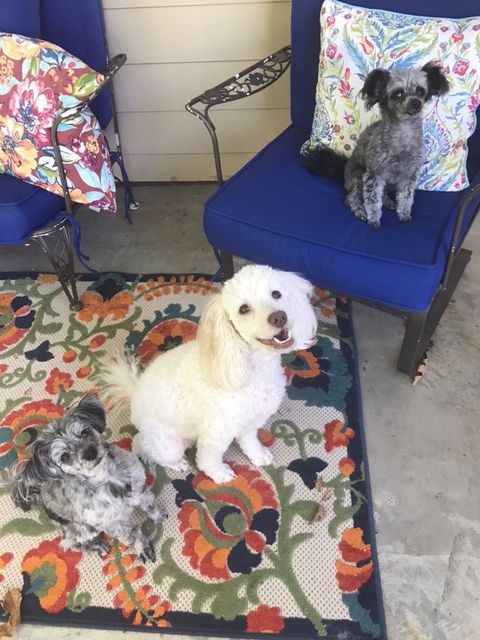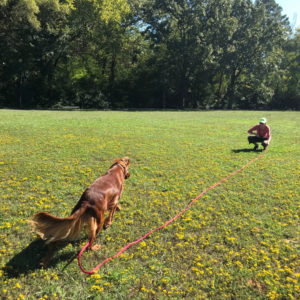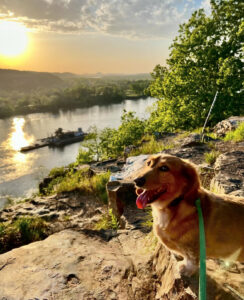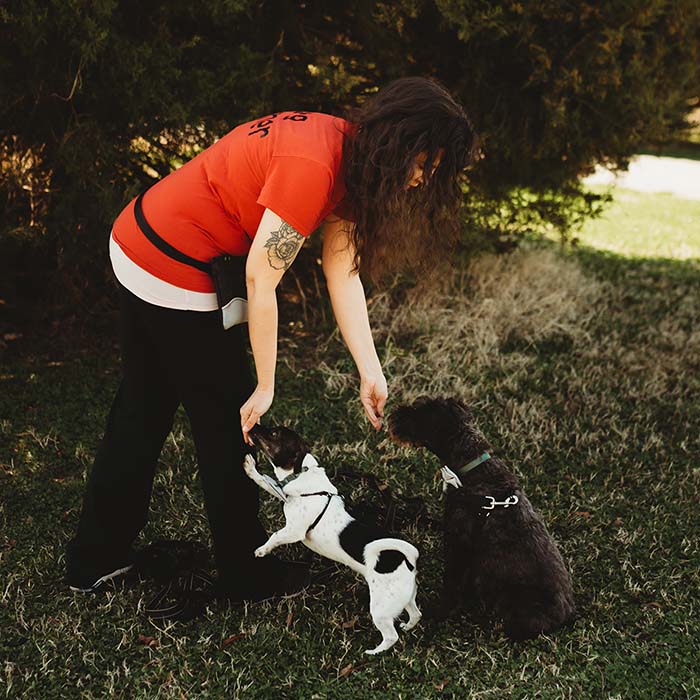I practiced as much as I could with my three dogs before I loaded them in the car and headed over to our photography session. I was nervous. This was my first time taking photos with Rosie, and we were heading to a new location. I wasn’t sure what to expect or even if we’d get any usable photos out of the session.
The reality is that a picture never tells the whole story.
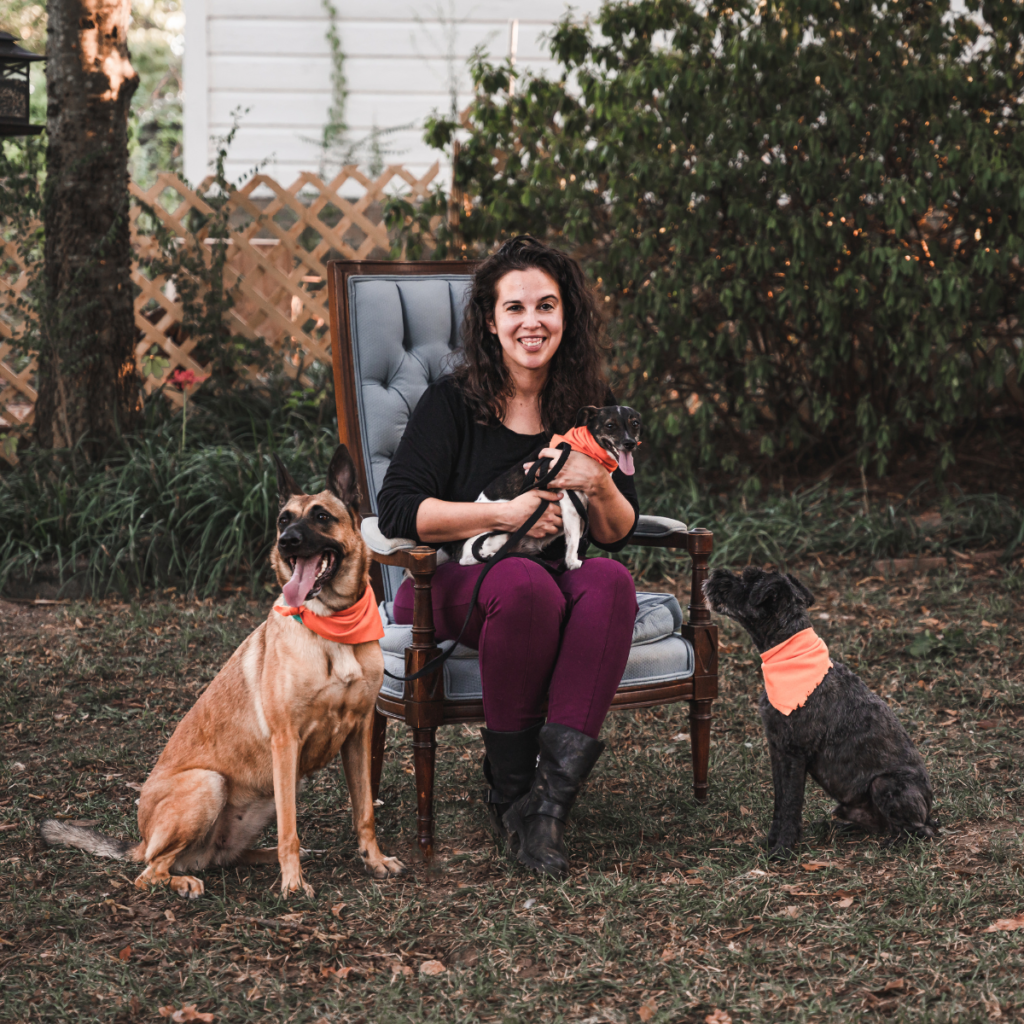
Even when you see five+ dogs, like when someone has seven personal dogs, or a doggy daycare gets 20 dogs dressed up and sitting in the corner. It looks impressive, absolutely, but you still don’t know what happened before, after, and during that photo. How long did it take them to get into position, how did they correct the dogs? What sort of training or communication was happening?
As I’ve grown as a dog trainer, I’ve grown much more skeptical of photos and videos. If a dog is in a certain position in a video, and there’s no clear way of seeing how they got there and no explanation, I usually suspect they’ve been placed, like when they’re clinging to a tree or on top of a duck. As money and sponsorships roll in and more and more people are turning to content creation full-time, there’s a lot of pressure on our pets to perform.
So what may look impressive may in reality have a big cost to the dog and the dog-owner relationship behind the scenes. Just because your dog may struggle with executing something similar doesn’t mean they can’t do it eventually. (Or perhaps we should consider if we should even try in the first place.)
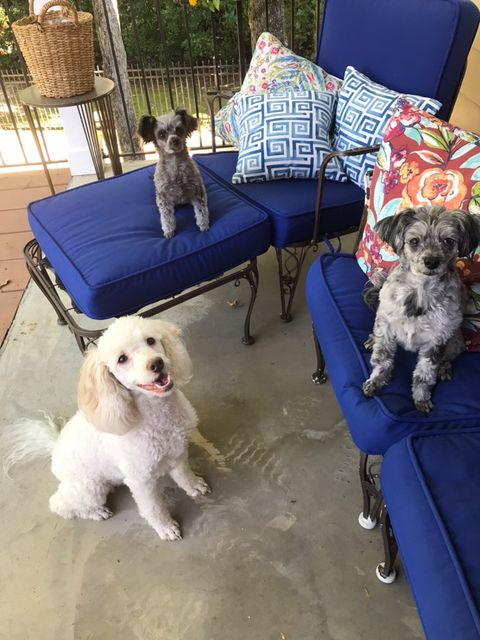
Complex and impressive poses aside, there are some basic things we can do with our pups to get them camera ready as we get those Christmas photo sessions scheduled.
- Practice with just you / your family, no cameras present. Are you taking photos in your house? In your backyard? At a park? Practice there first. Will your dog be on leash? Off leash? Will one family member be responsible for handling the dog? Adding in a photographer or two will be exciting, so try to add in time for your dog to settle, if needed.
- Train the cues you’ll need. Sit, down, and stay (with a release word) are the most helpful. Practice those first, then work on those same cues in the locations you’ll need. We practice so much with our dogs in front of us that we can forget easily a dog sitting in front of us isn’t super practical for most life situations, like photographs. Practice luring your dog next to you and then working on their sit, down, and stay while they are next to you. Practice on both sides if you’re not sure where you’ll need them, or with multiple people. If you only practice with your pup on your left side, for example, switching them to their right on the day of may be more challenging.
- Consider bandanas or other new gear ahead of time. If your dog isn’t used to a bandana, then throwing one on them the day of a photoshoot may be more headache and stress then you’re prepared for. Practice putting on their bandana and getting them used to it. Some pups may be uncomfortable or paw it off. Also, if you’re going with costumes or other clothing, be aware of your dog’s comfort level. Some dogs love clothes and costumes, and plenty don’t. If your dog is in distress over wearing a shirt, then it will be harder for them to focus and the session may be more stressful.
- With multiple dogs, practice a “place” cue, where they get used to staying where you ask them to sit or down. The difference between a “place” cue and “stay” is that “place” generally has a physical item the dog is on, like a blanket or towel or even a stuffed chair or couch. The “name game” may also be helpful here, where you say each dog’s name and follow it up with a treat. This is a great way to teach your dog patience and get them to settle. I lured my dogs into position and reinforced them for staying there with treats. If they moved or popped up, I’d just lure them back and start over.
- Once they’re settling and calmer as you practice, consider trying some alternative poses, like repurposing a “paws up” cue, like I did with Ellie, or using “attention”, like I did with Jeeves. You may have to work on duration first, but poses like “attention” (the dog sitting between your legs), “paws up” (paws up on an item, like a tree or couch), and “sit pretty” (a dog sitting on its rear with their paws in the air) are some great ways to make photos a little extra cute. But you do need to work on those foundations first for general training cues, then duration and distraction with any advanced cues.
- Consider different adjustments for different dogs. Jeeves is the oldest, at ten, and has been through the most training, so his poses off leash were the easiest. Because Lexi and Rosie are seven years younger, and with much less training, they’re both easily overstimulated and distracted and harder to pose. Holding Lexi and using a leash for Rosie helped them both settle. We will work up in future sessions to getting them both calm off leash (in a safe environment), but that wasn’t happening for this session. (And remember, your photographer usually can remove leashes digitally if you’d like.)
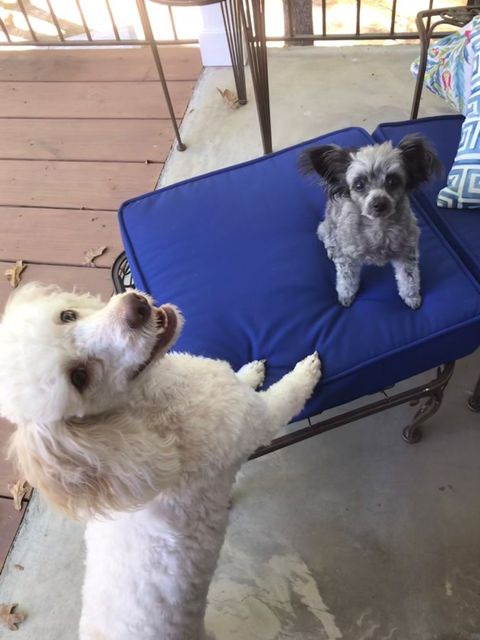
Have you tried taking photos with your pets? How’d it go? What worked for you and what do you wish you’d done a little bit differently?

